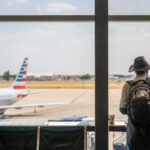
International students could fly to New South Wales (NSW) from as early as July under a pilot plan announced by the NSW government today. NSW Treasurer Dominic Perrottet said in a statement that the pilot plan will initially see a limited number of students from a range of countries in purpose-built student accommodation adhering to the same quarantine requirements as all incoming travellers.
The pilot plan is supported by NSW Health and NSW Police. It will enable 250 international students to come to Sydney per fortnight from mid-year, in a gradual approach that will enable the state to closely manage the process and ensure community health is not compromised, said Perrottet. The international student allocation will be in addition to the current number of returning Australians allowed into NSW each week. “This won’t come at the expense of returning Aussies. We will continue to bring back 3,000 people per week – well more than any other state,” said Perrottet.
“International education is our second most valuable export and we need to do what we can to help students return and revive this sector as quickly as possible,” said Perrottet. “Typically, we have more than 250,000 international students studying in NSW each year and they directly supported over 95,000 local jobs prior to the pandemic. If we don’t act fast, students will turn to other overseas destinations and it could take the sector decades to recover. NSW Health would triage arriving students and direct them to quarantine at specially approved student accommodation at no cost to taxpayers.
Perrottet said international students are a vital missing piece in the state’s economic recovery, with the sector worth 14.6 Australian billion dollars in 2019. This will benefit tens of thousands of NSW residents whose jobs rely on this industry across retail, hospitality and many other fields. It is estimated that the combined impact of closed international borders, including on students and tourism, could be as high as A$1.5 billion per month for NSW. This is a major contributing factor to the CBD’s slower economic recovery rate.










